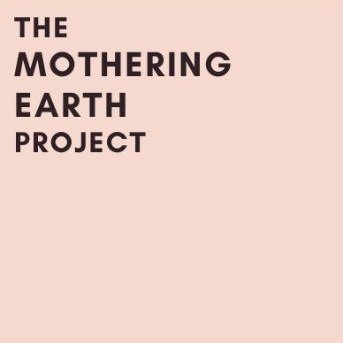The Difference Between Pasture-Raised, Cage-Free, Free-Range Eggs — and Other Carton Labels
What Do Egg Carton Labels Actually Mean?
If you’ve ever shopped for eggs, you’ve likely experienced the onslaught of choices — “hormone-free,” “pasture-raised,” “cage-free…” What do they all mean? Which offers humane conditions for the chicken? And what type of eggs are the “best” ones to buy? Let’s break this down so you can make informed, quick choices that feel right for you the next time you’re grocery shopping.
Conventional Eggs
Conventional eggs likely have no specific labeling, but can sometimes be stamped with greenwashing terms. “Humane” is a common one; it’s unregulated and not the same as “certified humane” — so be sure to look for the “certified humane” seal. “Hormone-free” is another misleading phrase since the FDA banned the use of hormones in all poultry (both eggs and chicken) in the 1950s. Farm fresh, happy hens, and natural are also greenwashing terms to look out for. Additionally, keep your eyes peeled for the phrase “antibiotic-free” which is often added to cartons to make you think you’re buying something special. Nearly all eggs in the U.S. are free of antibiotics. (They reduce egg production and are thus, rarely used). In addition to greenwashing, it should be noted that during conventional egg production, hens are packed into cages by the dozen. Each bird has less space than a single sheet of letter-sized paper (67 square inches) to stand.
Cage-Free, Free-Range, and Pasture-Raised
Cage-free is a term regulated by the USDA. It means the hens aren’t kept in cages, but still might live in cramped conditions, confined to the indoors. Cage-free hens must be “able to roam vertically and horizontally in indoor houses, and have access to fresh food and water.” Cage-free conditions lead to more hen-on-hen violence and worse air quality than farms that use cages, but they can spread their wings.
Free-range is the next step up in terms of animal welfare for hens. The term “free-range” is also regulated by the USDA and means chickens have access to outdoor space. Free-range requires that hens be “housed in a building, room, or enclosed area, and have access to fresh food and water, and continuous access to the outdoors during their laying cycle.” Still, there is no government oversight to confirm these conditions are being upheld. Additionally, the term is misleading because it doesn’t mean hens can roam freely outdoors, as they can be confined to a barn with only a cement screened-in porch without access to grass or dirt.
Eggs from pasture-raised hens are what you likely envision when you think about happy, roaming, chickens. Although the term pasture-raised is not regulated by the USDA, when it’s paired with “Certified Humane” and/or “Animal Welfare Approved” certifications, you can be sure that each hen gets 108 square feet of outdoor space, in addition to access to indoor barn space. Pasture-raised hens must also have access to soil and can hunt for food on their own in an outdoor environment. This means that they are not only getting a better diet, but their eggs also contain 3 times the amount of healthy omega-3 fat compared to cage-free eggs—meaning eating pasture-raised eggs is better for you too.
Organic
Hens that produce organic eggs must be cage-free and must have access to the outdoors when seasonally appropriate. These hens must be fed an organic diet of feed produced without conventional pesticides or fertilizers. It should be noted, however, that in addition to the base level “cage-free organic” eggs, you can also get free-range organic, pasture-raised organic, or regenerative organic eggs.
Regenerative Eggs
Regenerative eggs reign supreme regarding animal welfare, land use, and human health. The idea behind regenerative agriculture is that it is climate-friendly because it sequesters more carbon than it releases and it regenerates ecosystems and the soil (which is in bad shape, globally) in which the hens graze.
So what does regenerative egg production look like? It’s not a cookie-cutter “standardized” approach since the farm will adapt to the local ecosystem, but here is a basic blueprint:
Chickens can freely roam over land and feed on cover crops, seeds, grasses, and insects in the undergrowth of crop-producing trees and woody perennials like nuts and berries. The trees and bushes naturally protect the hens from overhead predators and act as shelter from sun and weather. Because 1. the chickens eat the cover crops and insects, 2. are rotated to ensure they don’t over-graze, 3. the chicken’s poop fertilizes the soil of the crops (no commercial fertilizers needed), it means the hens live in symbiosis with the environment, which results in healthier, more nutrient-dense soil (and thus more nutrient-dense eggs), carbon sequestration, and resource conservation.
What is regenerative agriculture?
Regenerative agriculture currently leads the way as the most sustainable food system and is a successful way of sequestering carbon while also increasing productivity. It is a holistic approach to agriculture that centers around land conservation/rehabilitation, and increasing biodiversity. It focuses on conservation, regenerating the topsoil through no- to low-tilling, cover crops, and composting, and growing food / raising livestock together in a way that supports the ecosystem and benefits both the land and the animals.
What about vegan eggs?
Vegan eggs are made from plants such as mung beans. Believe it or not, plant-based eggs can look and taste very close to a traditional egg. In fact, the taste is almost identical. While you may notice a slight difference in texture if eating them scrambled, it’s hard to tell them apart from traditional eggs, particularly in dishes such as quiches, baked goods, or in recipes. While plant-based eggs have less protein than a traditional egg (3g to 5g of protein in a plant-based egg, depending upon the brand, compared to 6g in a traditional egg), eggless eggs are lower in cholesterol. The downside is they cost about a dollar more than free-range organic eggs. Even if you’re not vegan, they could be worth a shot.

